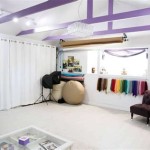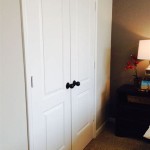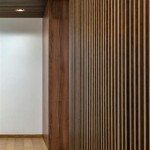Popular Paint Colors For Interior Design 2024 House Exterior Painting
The selection of paint colors for both interior and exterior spaces is a crucial element in defining a home's aesthetic and ambiance. Trends in paint colors are constantly evolving, influenced by shifts in design preferences, technological advancements in paint formulations, and a desire to reflect contemporary lifestyles. For 2024, several color trends are emerging as dominant forces in both interior and exterior design, offering homeowners a range of options to personalize their living spaces and enhance curb appeal.
Understanding these trends requires a careful consideration of various factors, including the architectural style of the house, the surrounding environment, and the desired mood to be created. This article will explore the popular paint colors expected to be prominent in 2024 for both interior and exterior house painting projects, providing insights into their characteristics, applications, and potential impact on the overall design.
Interior Paint Colors: A Focus on Comfort and Connection
Interior paint color trends for 2024 are leaning towards palettes that promote a sense of comfort, tranquility, and connection with nature. This reflects a growing desire to create homes that serve as retreats from the external world, offering spaces for relaxation, rejuvenation, and meaningful interactions. Warm, muted tones and earth-inspired hues are gaining prominence, replacing the cooler grays and stark whites that were popular in previous years. This shift indicates a yearning for environments that feel inviting, nurturing, and emotionally resonant.
One of the key trends is the embrace of warmer neutrals. These are not the beige tones of the past, but rather sophisticated variations of off-whites, creams, and taupes with subtle undertones of yellow, pink, or green. These colors offer a versatile backdrop for a variety of decorating styles, allowing for pops of color through furniture, artwork, and accessories. Their warmth creates a sense of coziness and helps to visually expand smaller spaces. They also work well in combination with natural materials like wood, stone, and leather, further enhancing the connection to the outdoors.
Another significant trend is the increasing popularity of earthy greens and blues. These colors evoke feelings of serenity, peace, and connection to the natural world. Soft, muted greens like sage, olive, and eucalyptus are being used to create calming and restorative spaces, particularly in bedrooms and bathrooms. Similarly, muted blues like sky blue, seafoam green, and deep teal are being incorporated into living rooms, dining rooms, and home offices to promote relaxation and focus. These colors can be used as accent walls or throughout an entire room, depending on the desired effect.
Pastel shades are also making a comeback, albeit in more sophisticated and nuanced forms. Soft pinks, peaches, and lavenders are being used to add a touch of whimsy and femininity to interiors. These colors are often paired with bolder accent colors or used in unexpected ways, such as on ceilings or trim, to create a unique and contemporary look. They work particularly well in nurseries, bedrooms, and bathrooms, adding a sense of playfulness and serenity.
Finally, deeper, more saturated colors are being used strategically to add drama and visual interest to interiors. Rich jewel tones like emerald green, sapphire blue, and ruby red are being incorporated as accent walls, in furniture upholstery, and in decorative accessories. These colors add a sense of luxury and sophistication to a space and can be used to create a focal point or to highlight architectural details. They work well in formal living rooms, dining rooms, and home offices.
Exterior Paint Colors: Enhancing Curb Appeal and Complementing the Landscape
Exterior paint colors play a crucial role in defining a home's curb appeal and creating a positive first impression. Trends in exterior paint colors for 2024 are focusing on palettes that complement the surrounding landscape, enhance the architectural style of the house, and reflect the homeowner's personal style. Natural, earthy tones are proving popular choices, along with bolder accent colors that add personality and visual interest. Factors such as geographical location, climate, and the materials used in the house's construction significantly influence the best color choices. A house in a sunny, coastal region might benefit from lighter, brighter colors, while a house in a more wooded area might look best with darker, earthier tones.
One key trend is the continued popularity of neutral colors for siding. Shades of white, gray, and beige remain timeless and versatile choices, providing a clean and classic backdrop for a variety of architectural styles. However, these neutrals are becoming warmer and more complex, with subtle undertones of yellow, green, or brown. This adds depth and character to the exterior, preventing it from looking bland or sterile. Darker grays are also gaining traction, offering a more modern and sophisticated look. These darker shades can be particularly effective on contemporary homes or those with clean, minimalist lines.
The embrace of natural, earthy tones is another defining trend. Colors like olive green, forest green, brown, and terracotta are being used to create a sense of harmony with the surrounding landscape. These colors work particularly well in areas with lush vegetation or wooded surroundings, helping the house blend seamlessly into its environment. They can also be used to create a more rustic and inviting aesthetic, particularly on homes with traditional architectural styles.
Accent colors are playing an increasingly important role in exterior design. Front doors, shutters, trim, and other architectural details are being painted in bolder, more vibrant colors to add personality and visual interest to the exterior. Popular accent colors include deep blues, reds, yellows, and greens. The choice of accent color should complement the main siding color and the overall architectural style of the house. For example, a red front door can add a touch of warmth and vibrancy to a house with gray siding, while a blue shutter can create a more coastal or nautical feel.
Another trend is the use of contrasting colors to highlight architectural details. For example, painting the trim a lighter or darker shade than the siding can emphasize the architectural features of the house and create a more visually dynamic exterior. This technique works particularly well on homes with intricate trim work or interesting architectural details. The contrast should be subtle enough to be visually appealing but bold enough to be noticeable.
Finally, the increasing awareness of sustainable and eco-friendly paint options is influencing color choices. Many homeowners are opting for paints with low VOC (volatile organic compounds) content, which are better for the environment and for indoor air quality. These paints are available in a wide range of colors, allowing homeowners to create a beautiful and sustainable exterior without compromising on style.
Considerations for Selecting Paint Colors
Selecting the right paint colors for both interior and exterior spaces involves a complex process that requires careful consideration of various factors. The interplay of light, personal preferences, and existing decor elements makes the process of choosing the perfect palette a deeply individual one. It's not merely about following trends, but understanding how these trends can be adapted to create a space that is both beautiful and functional.
One of the most important considerations is the role of light. Natural light and artificial light can drastically alter the appearance of colors. Before making a final decision, it is crucial to test paint samples in the space where they will be applied, observing how they look at different times of day and under different lighting conditions. Colors that appear bright and vibrant in direct sunlight may appear dull or muted in shaded areas. Similarly, colors that appear warm and inviting under incandescent light may appear cool and sterile under fluorescent light. Understanding how light interacts with color is essential for creating a cohesive and harmonious design.
Personal preferences also play a significant role in color selection. The colors that resonate with an individual on a personal level are more likely to create a space that feels comfortable, inviting, and reflective of their personality. While it is important to be aware of current trends, it is equally important to choose colors that genuinely appeal to the homeowner and create a space that they enjoy spending time in. This often involves considering personal experiences, memories, and emotional associations with different colors.
The existing decor elements in the home should also be taken into account. The color of furniture, flooring, artwork, and other accessories should be considered when selecting paint colors. The goal is to create a cohesive and harmonious design that integrates all of the different elements of the space. This may involve choosing paint colors that complement the existing decor or selecting accent colors that provide a pop of contrast. It is also important to consider the overall style of the home. A traditional home might benefit from more classic and timeless colors, while a modern home might be better suited to more contemporary and minimalist shades.
The architectural style of the house should also influence the choice of exterior paint colors. Certain colors work better with certain architectural styles. For example, a Victorian house might look best with a palette of soft, pastel colors, while a Craftsman house might be better suited to earthy, natural tones. The goal is to choose colors that enhance the architectural features of the house and create a cohesive and harmonious exterior.
Finally, it is important to consider the surrounding environment when selecting exterior paint colors. The colors of the surrounding landscape, including trees, plants, and other natural elements, should be taken into account. The goal is to choose colors that complement the environment and help the house blend seamlessly into its surroundings. For example, a house in a wooded area might look best with darker, earthier tones, while a house in a coastal area might be better suited to lighter, brighter colors.

2024 Exterior Paint Trends According To The Experts Scout Guide

400 House Painting Colours Outside 2025 Exterior Wall Paint Color Combinations Ideas

Top Exterior House Colors For 2024 Which Color To Choose

10 Modern House Colors For Your Exterior In 2024 Brick Batten

100 House Painting Colours Outside 2024 Exterior Wall Paint Color Combinations Ideas Colour 6

2024 Exterior Paint Trends According To The Experts Scout Guide

Top Exterior Paint Trends For 2024 Sandtex Paints

Best Benjamin Moore Exterior Paint Colors For 2024 Brick Batten

Top 5 Exterior Colours To Use In 2025 Home Painters Toronto

Exterior House Paint Ideas Jones Asset
Related Posts








